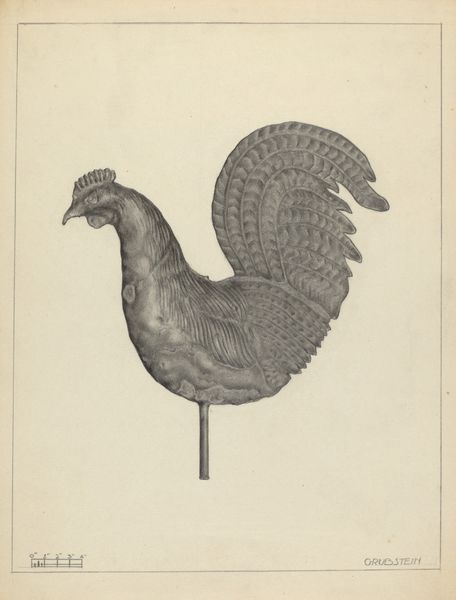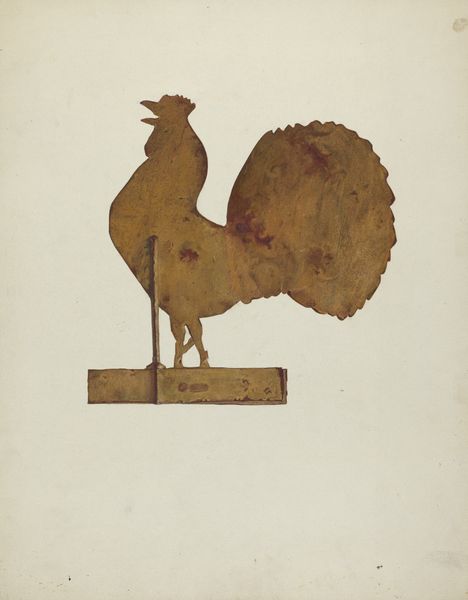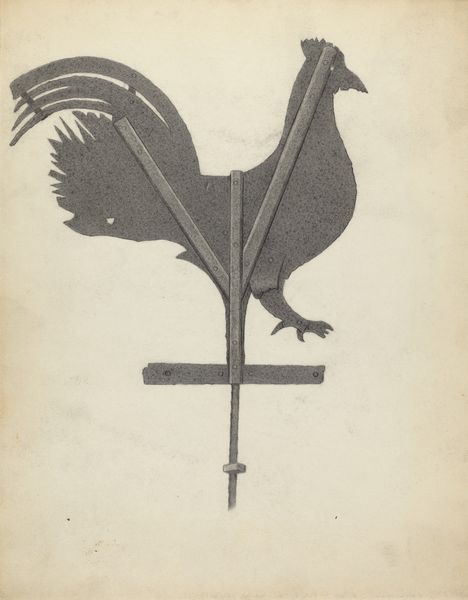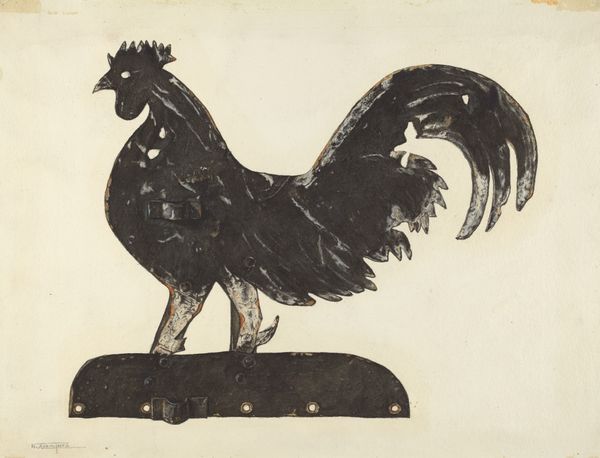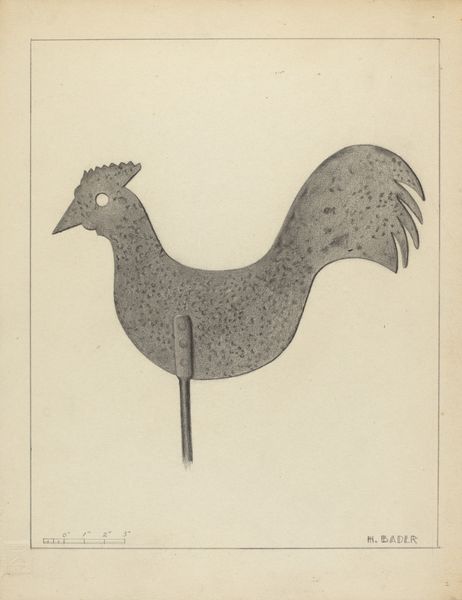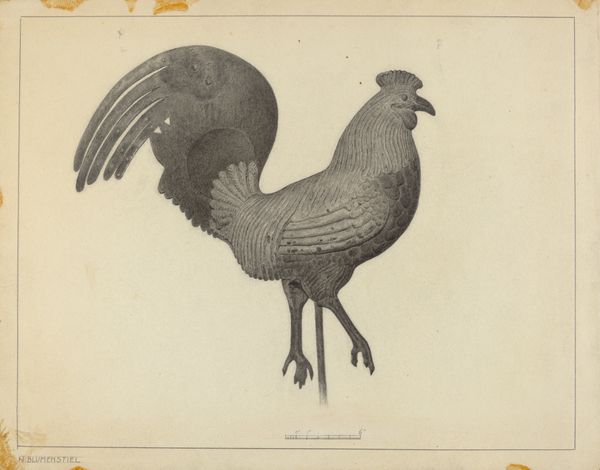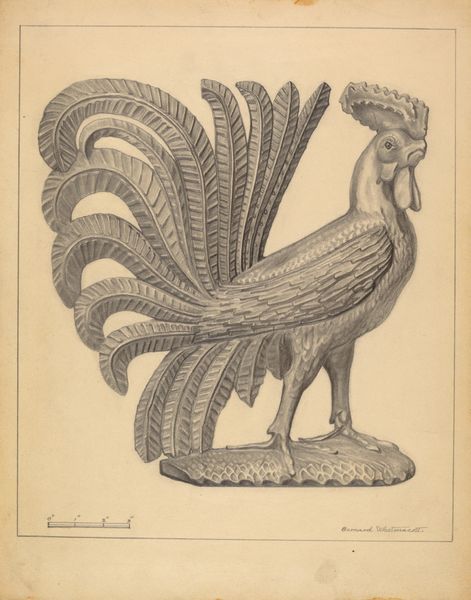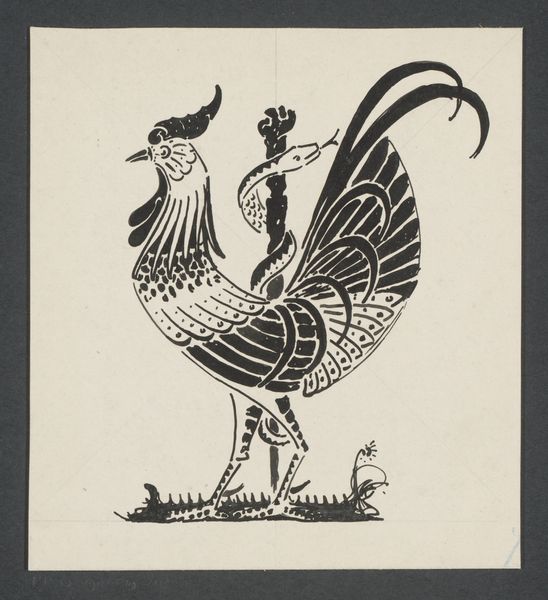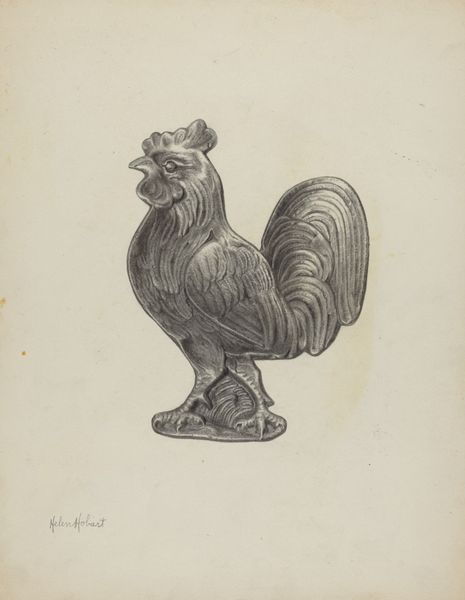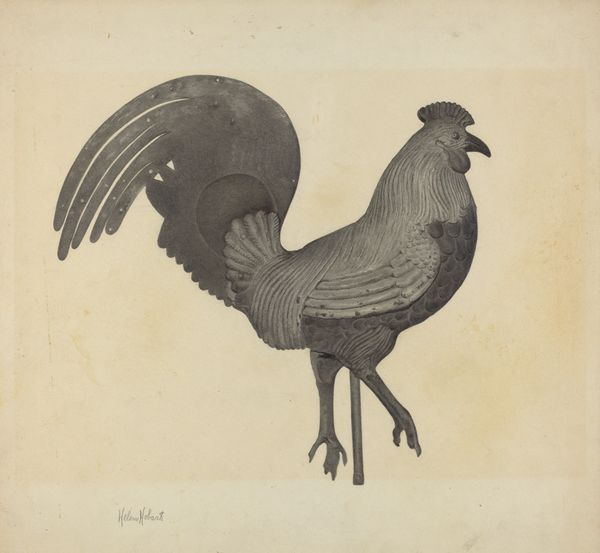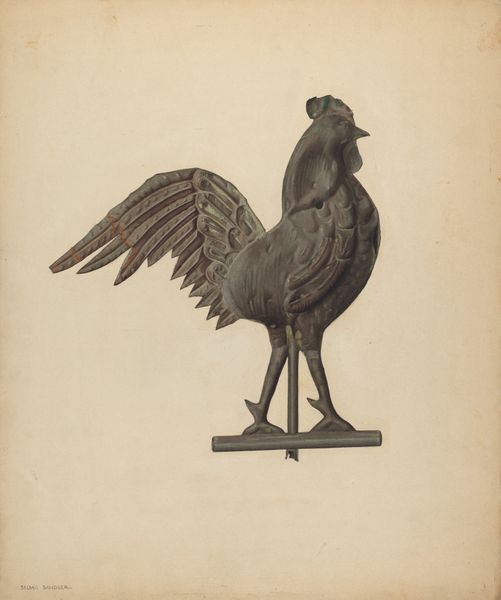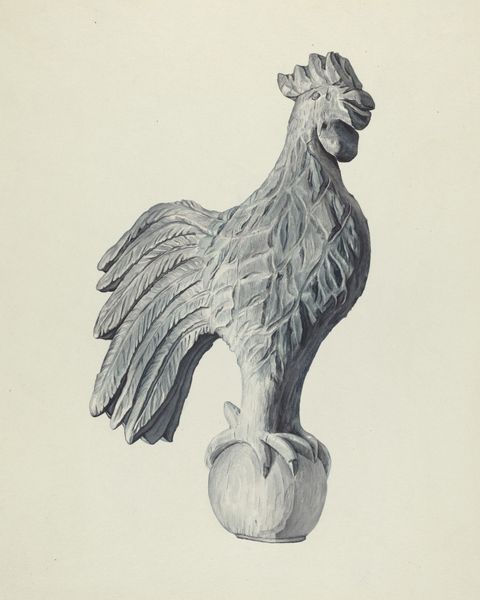
drawing, paper, ink
#
drawing
#
paper
#
form
#
ink
#
geometric
Dimensions: overall: 22.8 x 22.7 cm (9 x 8 15/16 in.) Original IAD Object: 20 1/2" high; 18" wide
Copyright: National Gallery of Art: CC0 1.0
Editor: So, this is Salvatore Borrazzo's "Weather Vane," created around 1936. It's an ink drawing on paper. It feels so simple, almost like a child's cut-out, but something about the geometric foundation is really appealing. What do you see in this piece? Curator: I see a cultural touchstone rendered with loving detail. The rooster, especially as a weather vane, is a potent symbol. It speaks to a rural past, a connection to nature's rhythms, and even, perhaps, vigilance. Why do you think Borrazzo chose this particular form? Editor: I guess it's a classic form, right? Is it supposed to remind people of something specific? Curator: Absolutely. Think about the historical context: the rooster has been a symbol of France, of pride, even defiance. But on a weathervane, it also suggests direction, guidance. Do you see any tension between those two aspects of the rooster image? Editor: Hmm, I see what you mean. The strong national symbol versus the humble direction pointer. It’s an interesting contrast. So much in a simple drawing! Curator: Precisely. And the choice of geometric shapes… that lends a sense of modernism, almost an industrial aesthetic to a very traditional image. Editor: I didn’t even think of that, that is true. It really brings together a lot of seemingly different ideas, which is so clever. Thank you. Curator: My pleasure! It's a reminder that even seemingly simple images carry layers of cultural memory. And as for the weather vane, the earliest weather vanes were emblems of gods, totems on sacred buildings. It reveals continuity through symbols.
Comments
No comments
Be the first to comment and join the conversation on the ultimate creative platform.
